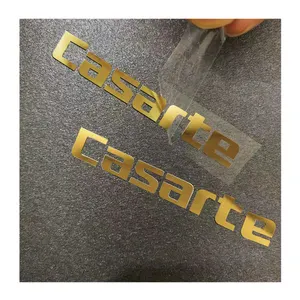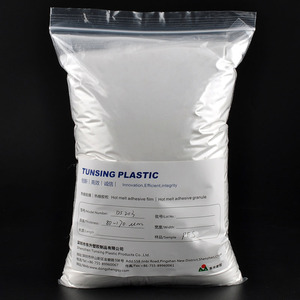(464783 products available)















































































































































































































Adhesive is a substance used to bond two surfaces together. It is commonly known as glue. The two surfaces could be wood, plastic, metal, paper, or fabric. Various types of adhesives are available, each with its unique properties and applications. Here are some common types:
PVA Glue
Polyvinyl acetate (PVA) glue is a white, non-toxic, and odorless synthetic adhesive. It's commonly known as school or white glue. It dries clear and becomes transparent. This makes it ideal for use on paper, wood, and porous materials. PVA glue is popular in schools and homes for arts and crafts.
Super Glue
Super glue refers to a family of fast-acting cyanoacrylate adhesives that bond skin in seconds. It can bond almost any material. This includes metal, plastic, rubber, paper, ceramic, and wood. It is a popular adhesive for various household repairs. These include fixing broken items or small electronics.
Epoxy
Epoxy consists of two parts: resin and hardener. When mixed together, they create a strong adhesive. One that is resistant to heat and chemicals. Epoxy is ideal for bonding metals, plastics, and ceramics. It is also used in automotive and industrial applications.
Hot Glue
Hot glue comes from a thermoplastic adhesive that is dispensed through a glue gun. The gun heats the glue sticks until they melt. The melted glue gets dispensed through the glue gun nozzles. It then cools and hardens quickly. Hot glue is used on crafts, electronics, and fabric projects. It bonds to various surfaces, including plastic, wood, and metal.
Spray Adhesive
Spray adhesive comes as an aerosol can that dispenses a fine mist of adhesive. It provides an even coating over large surfaces. This makes it ideal for projects requiring a wide coverage. Spray adhesives are used in crafting, mounting photos, and laminating surfaces. They bond to paper, fabric, plastic, and metal.
Rubber Cement
Rubber cement is a flexible adhesive made from rubber polymers. It is dissolved in solvents such asethyl acetate and heptane. The adhesive becomes tacky when the solvent evaporates. Rubber cement is popular for photo mounting, scrapbooking, and arts and crafts. This is because it allows for repositioning before it sets.
Wood Glue
Wood glue is designed specifically for bonding wood surfaces. It provides a strong bond that is resistant to heat and moisture. This makes it ideal for indoor and outdoor applications. Wood glue is commonly used in furniture construction and woodworking projects.
Fabric Glue
Fabric glue is a flexible adhesive that bonds fabric to itself or other materials. It is ideal for sewing projects, repairs, and crafts. Fabric glue provides a strong bond that withstands washing and wear. This makes it perfect for clothing and upholstery applications.
When it comes to selecting an adhesive, several crucial factors must be considered to ensure the bond effectively meets the project's specific requirements and applications. Firstly, understanding the materials that need to be bonded together is essential. Different adhesives work better with certain materials; for instance, epoxy is ideal for metals and plastics, while polyurethane adhesive is more versatile and can bond a wide range of materials.
Secondly, the environmental conditions where the bond will be exposed to the elements should be considered. For example, will it be placed outdoors, subjected to moisture, or exposed to extreme temperatures? In such a case, waterproof or heat-resistant adhesives would be more appropriate. The required strength of the bond is also necessary; structural applications would need a more robust adhesive, whereas a temporary bond would need something less permanent.
Another critical factor is the adhesive's curing time. Some projects may require a quick-setting adhesive to speed up the process, while others may need a longer working time to allow for adjustments before curing. Safety considerations are also paramount, as some adhesives may emit harmful fumes during application. Therefore, using them in well-ventilated areas or wearing appropriate protective gear is necessary.
Additionally, the adhesive's viscosity and application method should be considered, as this can affect the ease of use and the precision of the bond. Finally, cost and availability can also be practical considerations when choosing an adhesive, as some specialized adhesives may be more expensive or challenging to find.
Adhesives serve a variety of purposes, including bonding different materials permanently or temporarily, sealing joints or gaps to prevent leakage, and assembling components in construction or manufacturing applications. In addition, they may provide cushioning, noise reduction, or vibration dampening in flooring and carpeting.
Versatility
Modern adhesives bond various materials, including metals, plastics, wood, rubber, and ceramics. This versatility has led to a decline in welding and mechanical fasteners.
Durability
Adhesive bonds can be more durable than the materials themselves, resisting heat, moisture, chemicals, and stress.
Speed
Adhesives allow for faster assembly times in manufacturing processes, as they require less time than mechanical fasteners and welding.
Environmental Resistance
Some adhesives are specially formulated to withstand harsh environments, making them ideal for outdoor or industrial applications.
Aesthetic Appeal
Adhesives provide a smooth, seamless finish in applications where mechanical fasteners would be unsightly, such as in furniture or countertop installation.
Formulation
Adhesives are crafted from polymers, resins, hardeners, and other additives that form a strong bond when applied to surfaces.
Viscosity
The adhesive's thickness determines its ability to flow and spread, affecting application and bonding strength.
Solid Content
High solid content adhesives cure faster and provide a stronger bond, making them suitable for demanding applications.
Moisture Resistance
Some adhesives are designed to resist exposure to water, making them ideal for outdoor or humid environments.
Temperature Resistance
Adhesives can withstand varying temperatures, ensuring their bond remains strong in both hot and cold conditions.
Glue adhesives, also known as adhesives, have several safety features that make them safe for use in various applications. Here are some common safety features:
Non-Toxic Formulations
Many glue adhesives are developed with non-toxic materials, making them safe for use by children and in close proximity to pets. These formulations usually meet safety standards provided by organizations like the American Society for Testing and Materials (ASTM) or the European Committee for Standardization (CEN).
Low-VOC and No-VOC Options
Volatile Organic Compounds (VOCs) are present in many adhesives and can be harmful when inhaled. Glue adhesives labeled as low-VOC or no-VOC release small or no amounts of these compounds, making them safer for indoor use. These adhesives are a great choice for poorly ventilated places or for people sensitive to chemicals.
Water-Based Adhesives
Water-based adhesives are often safer than solvent-based ones because they produce fewer fumes and are easier to clean up. They are frequently used in schools and homes. Examples include white glue, school glue, and wood glue.
Heat-Resistant Adhesives
Some glue adhesives are made to withstand high temperatures without melting or releasing harmful substances. These adhesives are useful in applications where heat exposure is common, like automotive or aerospace industries.
Glue adhesive technologies have made great strides in producing safe and high-quality adhesives. Here are some features of modern safe and high-quality glue adhesives:
Biodegradable and Eco-Friendly Options
Several adhesives are now developed from natural materials such as starch or protein, making them both safe and environmentally friendly. These adhesives are easily biodegradable and do not have any toxic properties.
Smart Adhesives
These adhesives change in response to environmental factors. For example, some can change color when exposed to high temperatures, warning of potential hazards. Others may enhance their bonding strength when subjected to stress, ensuring a secure bond.
Enhanced Packaging and Application Systems
Many glue adhesives come in improved packaging that minimizes the risk of spills and unintended exposure. Application systems such as precision nozzles, brushes, or rollers allow for controlled application, reducing waste and the risk of skin contact or inhalation.
What is the best adhesive for plastic?
Choosing the best adhesive for plastic depends on the specific type of plastic being bonded and the intended use. For polyethylene and polypropylene plastics, which are notoriously difficult to bond, specialized adhesives like primerless adhesives or certain grades of cyanoacrylate are often recommended. Similarly, for hard plastics like polycarbonate, acrylic, and PVC, solvent cement or epoxy adhesives often provide strong, lasting bonds.
Is it possible to make an adhesive bond stronger?
While the adhesive type is fundamental to bond strength, several factors can enhance an adhesive bond: Surface preparation, proper application, environmental conditions, adhesive type, and curing time.
What is the strongest adhesive in the world?
The strongest adhesive in the world is often considered to be a type of epoxy resin adhesive. Epoxy adhesives are renowned for their exceptional strength, durability, and resistance to a wide range of environmental factors. They provide strong bonds to various substrates, including metals, plastics, wood, and concrete.